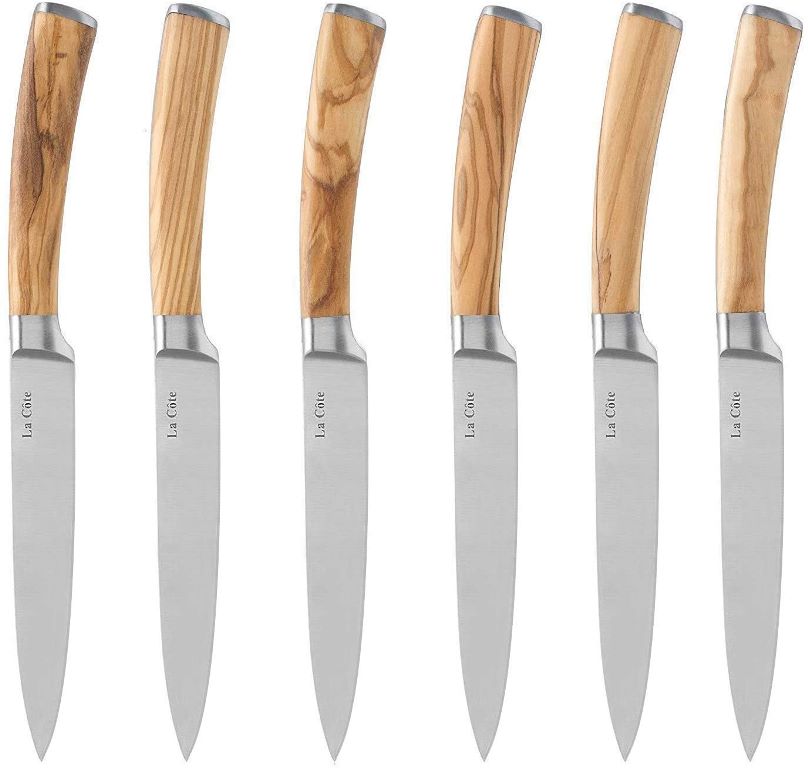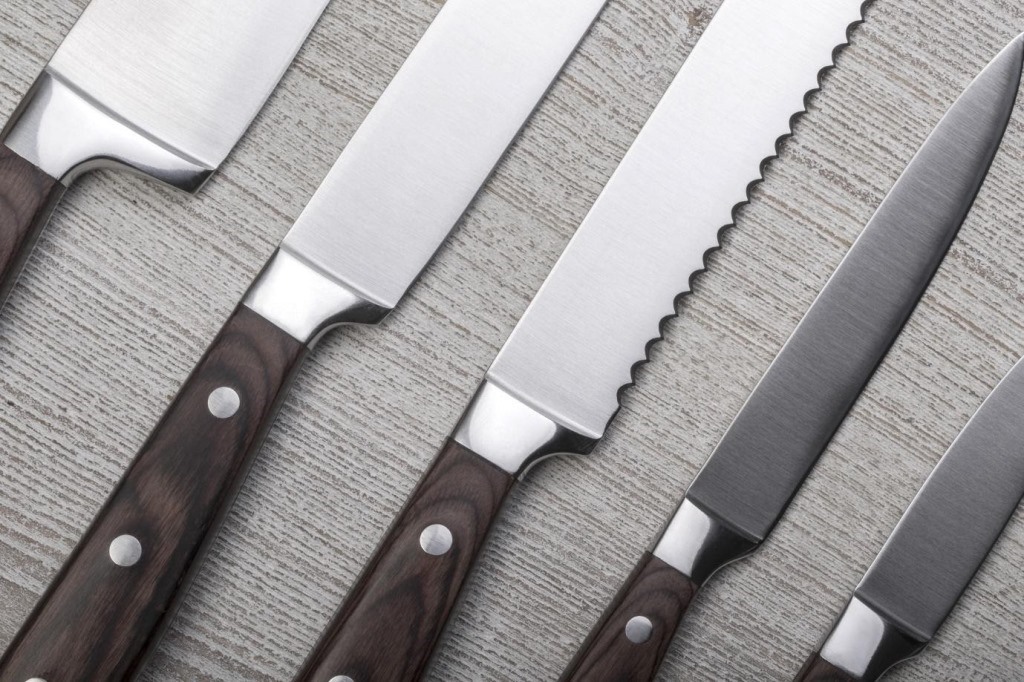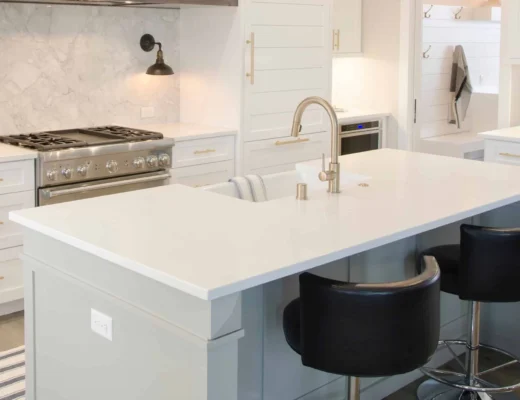Are you in the market for a new Japanese steak knives? A poor set of knives can make cutting that perfect bite of prime rib a frustrating experience, so why not upgrade to a better set of blades? After all, a quality set of steak knives can last you a lifetime.
Keep reading to learn what to look for when you’re shopping for a new steak knife set!
Serrated Or Non-Serrated?
One of the big debates among steak knife devotees is whether serrated or non-serrated (plain) knives are better. It’s wise to take a balanced look at each choice and figure out what your priorities are.
Serrated blades have serrations that some experts think make cutting through a rare piece of steak a much easier job. Another benefit of serrated blades? They stay sharper a little longer than a plain blade since they never make full contact with the bottom of a plate.

Your ears will thank you, too, since you won’t hear that abrasive noise when a serrated knife does make contact with the plate.
And serrated blades are easier to sharpen than they used to be thanks to advances in blade sharpening technology. Don’t let the sharpening scare you — just make sure you actually do it every few months. And if you eat a lot of steaks, take your knife set to a professional once a year.
Critics of the serrated blade will say that they don’t produce as pretty of a cut. It’s as if you are sawing through the meat. Non-serrated blades yield a cleaner cut but also make full contact with the plate surface beneath the steak.
Both types of steak knives will get the job done — it’s really a matter of determining which kind you prefer.
Look For Stainless Steel Blades
Since you want a knife that will be strong and effective, you should pay attention to the material that the blade is made out of. There are different schools of thought on which material is best, but one type is king: steel.
There are tempered blades, carbon blades, and cold steel varieties, among others. Each type presents a different advantage. In any case, a stainless-steel blade is what you should look for.
For an intense and strong blade, go with cold steel. Some experts prefer high carbon blades because they feel light in your hand for a more enjoyable cutting experience. And others like tempered blades because they are less of a headache to clean.
Most experts agree that you should avoid ceramic blades, which are not as durable. They may be tempting because of the lower price tag, but they won’t give you the long-lasting quality you need. Plus stainless-steel knives are less prone to rusting.
Determine Your Preferred Blade Size
With steak knives, blade size is a matter of preference, too. Many experts agree that a smaller blade is more effective for cutting a steak. If you go with a shorter knife, this means shopping for blades around 4″ to 5″ in length.
These shorter blades will be easier to take care of and maneuver when you’re sitting down with friends for a meal and want to look competent with your knife. If you’re trying to cut with a larger blade, it can feel clumsy and more difficult.

There are blades around 7″ in length, though, if you want a longer blade. Longer blades present more impressively when you’re setting the table for a fancy meal. As you mull over the options, consider what attributes are most important to you.
What Is the “Fit” of Each Knife?
You can think of “fit” as another way of saying craftsmanship. When someone talks about the fit of a knife, they are referring to how well each component of the life locks together. Does the knife’s form look top-notch?
If you see any gaps between the blade and the handle, that’s a red flag. Even the smallest gaps or misalignments mean there’s a better chance of water seeping in and ruining the handle.
Go For the Full Tang Option
A component of a knife’s fit is its “tang.” The tang is the portion of the blade that extends into the handle. You’ll notice that in cheaper knife sets, the blade ends right about where the handle begins — it has a partial tang.
A shorter tang blade can snap off if you’re aggressively cutting something.
The mark of a high-quality steak knife is a long if not full tang. The blade will be less likely to fall off at some point, and the knife will feel more secure in your hand because of the added weight.
The Best Steak Knife Set Will Be Balanced
Ultimately, you want a knife that feels balanced when you hold it. Full-tang knives tend to score higher on balance because the blade is sandwiched within the handle. It will feel more secure when you hold it.
As you’re looking for the best knife set, remember that form, function, and materials all come into play.

Choose knives with handles that you like, too. Some people like wooden handles, while others prefer brushed aluminum. It’s also a good idea to invest in a steak knife holder while you’re at it so you can display your new set with pride!
The Bottom Line
When you’re shopping around for new steak knives, remember that you’re making an investment that should last your lifetime — assuming you take care of them. Eating a perfectly cooked steak should be a divine experience. Make sure that you buy a steak knife set that is worthy of your cut of meat!
For more tips on how to build your best lifestyle, check back with us for more great articles!




